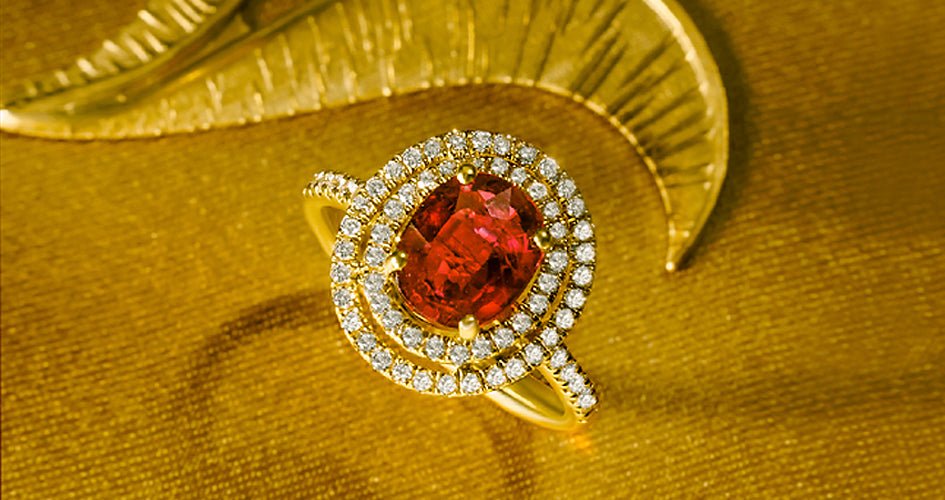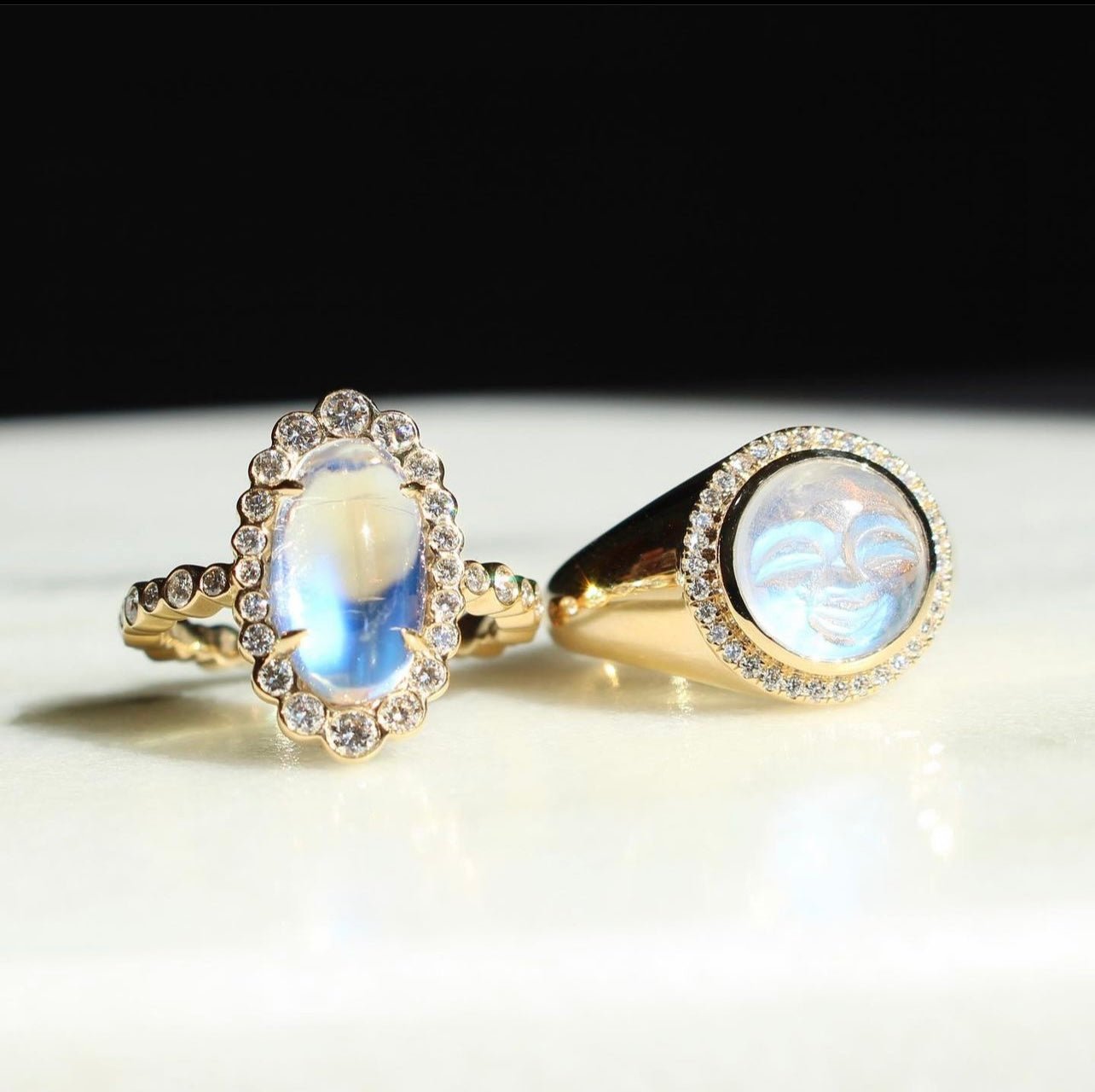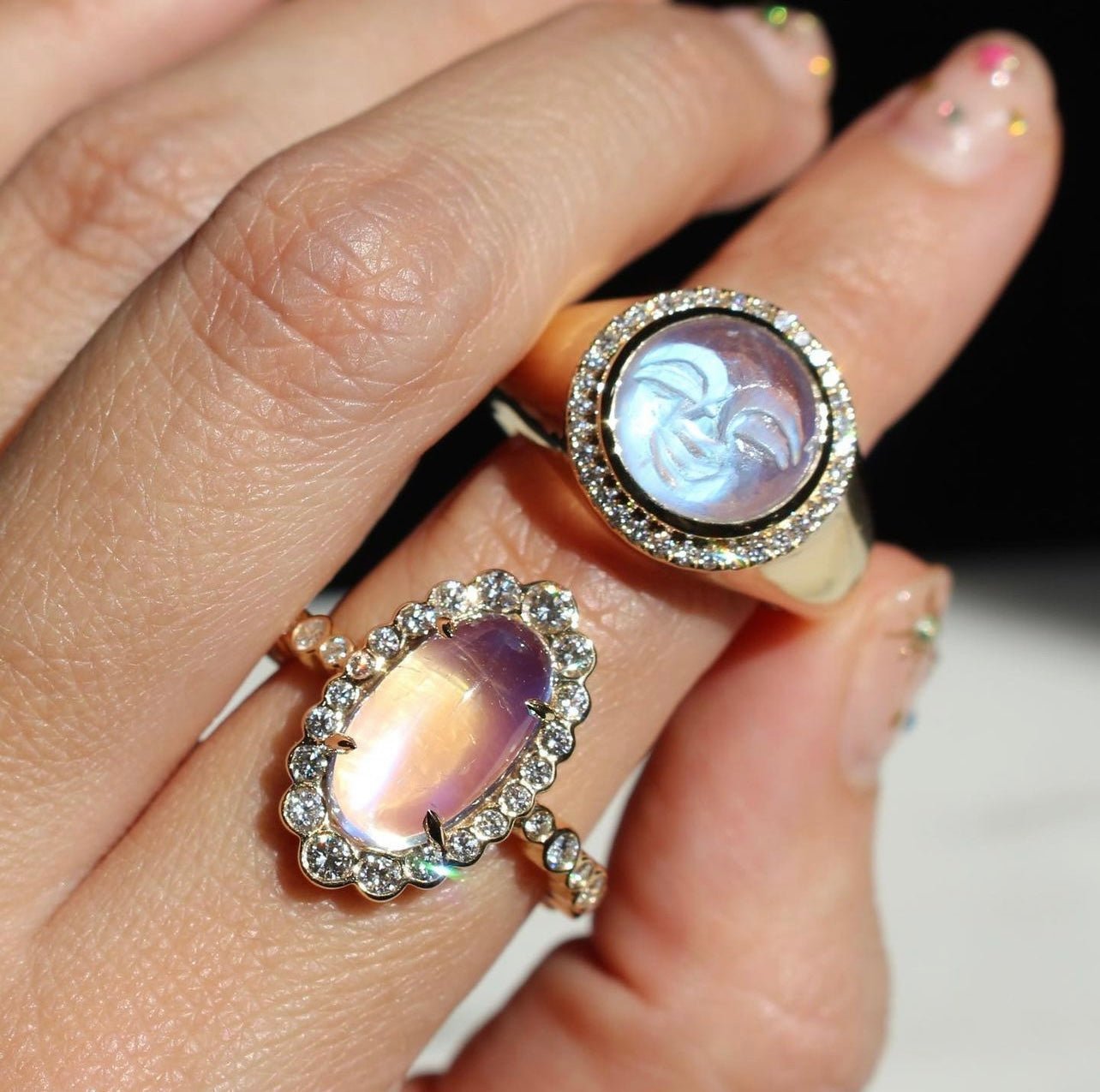Whether you’ve owned a precious ruby throughout your life or simply marveled at one in the jewelry collection of a friend or a parent, there is no doubt that you’ve witnessed the magnificence of this red gem.
Rubies are known as one of the “big three,” the most recognizable and well-used gemstones in jewelry making. It sits next to only emerald and diamond, two other powerhouses in the fine gem world.
What sets the ruby apart is its extravagant and daring color. With a hue as red as a fire or perhaps a scorching sun, rubies are distinctly their own and could be spotted from far away instantly. This led to the creation of a variety of different meanings and purposes, spanning history. The fact that rubies can be found in so many places throughout the world also leads to some contradicting lore.
Regardless, one thing that everyone can agree on is that this July birthstone is truly something entrancing. Join us as we reveal the ruby, its symbolism, and why so many honor its powers to this very day.
Physical Properties
While we plan to explore all of the symbolism around rubies, it makes sense to start with the basics first. Without an understanding of what this gem is made of, where it comes from, and how it is physically made into pieces of jewelry, the lore might not make sense. It will also help to explain why it is possible for rubies to sell for as much as $1 million per carat in some incredible conditions!
The History of Rubies
Rubies are a part of the corundum family with a hexagonal crystallography. Their vibrantly red hue comes from chromium.
They are extremely durable. They adeptly resist the scalding powers of external heat and fall at 9 on the Mohs Scale. This is nearly comparable to the hardness of diamonds, which are known to be the most sound precious gem. With a score this high, rubies are safe to wear in pieces like rings or bracelets that may be more prone to the daily wear and tear of life.
In terms of appearance, rubies can have a luster that looks like anything from glass (vitreous luster) or like diamonds themselves (adamantine luster). This stone could also have fluorescent and UV long and short luminescence.
While rubies can appear anywhere from fully see-through to opaque, they also come in offshoots of red, too. It isn’t uncommon to find pink, orange, brown, or purple hinted rubies, but they aren’t as classic (or expensive, typically) as red rubies. However, it is possible to find a ruby with a pleochroism between a purplish red and an orange-red.
Treatments can include plugging up fractures that are conchoidal and treating the gems with heat. Some rubies have inclusions, as do most naturally mined gems, and these can separate them in appearance from more perfect, lab-created counterparts.
Location and Impact
Rubies are mined in many different regions, including the United States, Australia, India, Thailand, Sri Lanka, Vietnam, Mozambique, and most importantly, Myanmar.
In Myanmar, rubies have been mined since 600 AD and are intensely fluorescent. This makes these “Burmese rubies” supreme in value and quality. They also have phenomenally red-purple hues. Mogok, Myanmar, has a vast supply of rubies that are not only gorgeous in color and shine but are available in large sizes.
Colorful Meanings
The redness of rubies has a lot to do with most of their symbolism. The gems share their color with blood, representing anything from life to death, wellness to a bad omen. Historically, this redness was most closely associated with a symbol of physical protection.
In ancient Myanmar, soldiers looked to rubies to protect them during battle. It was thought that it would keep the men alive and save them from any bodily peril. It was documented that men would put the gem underneath their skin for the ultimate level of protection.
This is a seemingly universal ancient belief. In Hindu tradition, rubies were used and worn for the purpose of protection as well.
Red is also known to represent love as much as anger. It is fiery in the same way that humans are. This makes it a classic Valentine’s Day and anniversary gift — events that celebrate passionate emotion.
It is the perfect gemstone to commemorate your feelings for others. Just as rubies were worn over the heart as pendants, they are worn on necklaces in modern times to show off one’s love for another.
Religious Meanings
In Ancient Hindu belief, rubies were one of the best gemstones to offer to their god, Krishna. In this culture, the ruby is considered to be the most precious stone.
When rubies are given to Krishna, the bearer is believed to be born again as an emperor or king. The Kalpa Tree in Hindu tradition is formed by different gems like diamonds and emeralds. Notably, the fruits on this tree are rubies.
Another ancient belief was that rubies were far too beautiful and complex to be made by humans. Thus, they must have been mined and faceted by the gods of various religions. People thought this as recently as the Middle Ages, too. They often thought the gods who created the gems lived inside of them as well.
Rubies also appear in the Bible in association with genius and attractiveness.
Lore and Ways to Wear
Culturally, rubies are representative of monarchy and power. In European royalty, rubies were worn to assert superiority and show off money.
Rubies were also believed to aid one’s health, apart from protection from attack. They were worn when someone was excessively bleeding or inflamed to slow down and stop the process. If one was cold or water needed boiling, rubies were believed to do the trick. This was because they seemed to look like fire themselves.
Often, rubies were used to ward off “bad” feelings and to create a more positive demeanor.
What Are Some Alternatives to Rubies?
Rubies are just one of a few different red gemstones. At one point, all of the red-hued gems were lumped together as rubies, but we now know this is not the case.
One of the best examples of this confusion is in the Black Prince’s Ruby, which sits at the head of Britain's Imperial State Crown. It is not a ruby at all, but actually a type of red spinel.
Sapphires are also a part of the corundum family. They are set apart from rubies for having red coloring that is not medium to dark. Essentially, any “ruby” that has a mild red shade is a sapphire. Garnets are another commonly confused gemstone that is red.
Our Suggestion
As much as we adore rubies at Mark Henry Jewelry, we also firmly believe that keeping your jewelry box varied is ideal. That is why we are such strong advocates of the ultra-rare gemstone alexandrite.
First discovered in the 1800s in the Ural mountains of Russia, alexandrite became famous for its color-changing properties. It possesses a red hue analogous to a ruby under incandescent light; it appears to be a stunning emerald green under daylight.
This makes it a two-in-one offer and perfect for wearing in numerous outfits and during different times of the day. This gem speaks to mystery, royalty, and a little touch of magic.
Gone are the days of switching out one pair of earrings for another to match your morning-to-night look. With alexandrite, you have all of the flash of a ruby combined with the option of an emerald. What is there not to love?
The Ruby Mark Henry Collection
Now for our favorite part — our own collections. At Mark Henry Jewelry, we offer only the best quality rubies in perfectly set and styled pieces. Our designers work diligently to make sure our offerings are as unique as they are beautiful.
One of our favorite ruby pieces is the Double Halo Ruby Ring. If you’re looking for a ring that has a certain wow factor while maintaining a classy look, this is the piece for you.
A central ruby stone weighing in at 2.05ct is set within a halo of 0.50ct round diamonds. They reflect the illumination of the ruby itself while adding an additional shine. These diamonds wrap around the band of the ring so you’ll glisten at every angle with the wave of a finger.
For any lovebirds, our Heart Throb Stud Earrings are the perfect gift for a loved one. With 0.45ct of pavé ruby, they are shaped into two shining hearts for each ear. They are an excellent, sophisticated, yet subdued pairing for Valentine’s Day or anniversary dinner dates.
If the winter holidays have passed and you’re looking to give the woman in your life a spring-themed Mother’s Day surprise, consider our Daffodil Garden Station Ruby Necklace. Just like the ancient lore says, this 1.27ct ruby pendant will fall right over the chest for ultimate protection and enhancement of positive emotions.
What We Want You to Know
All of our pieces are ethically mined, cut, and set. If you need assistance in choosing jewelry for that special someone, or perhaps as a gift to yourself, don’t hesitate to reach out to our specialists for a guiding hand.
Jewelry is more than an accessory; it’s a way to declare love, show appreciation, and honor the natural world in her infinite beauty and wisdom.
Sources:
Ruby Symbolism and Legends | International Gem Society
Ruby Value, Price, and Jewelry Information | International Gem Society



Wow, what an incredible exploration of the meaning behind Ruby Jewelry! Loved reading about its history, meanings and materiality. Very nice insight! Also Visit : https://navratan.us/gemstone/ruby-stone/